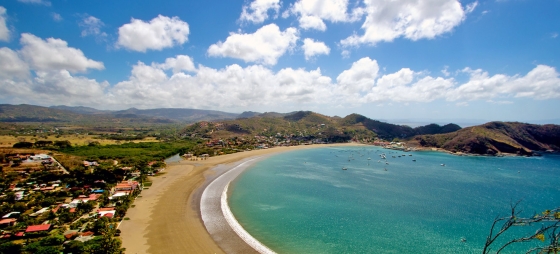Managua Weather and Climate: A Comprehensive Guide
Managua maintains a fairly consistent very warm average temperature.
It receives a moderate amount of precipitation.
Let’s explore the climate details in depth to provide you with a complete overview.
Average maximum day and minimum night temperature
With minimal seasonal shifts, Managua experiences a constant climate year-round. On average, daytime temperatures range from a very hot 37°C in April to a very warm 33°C in January.
Nighttime temperatures can drop, with average lows reaching 23°C in January. Check out our detailed temperature page for more information.Temperature ranges by month
Precipitation and rainy days
Generally, Managua receives mid-range precipitation levels, with 960 mm annually. The seasons in Managua, bring significant changes in precipitation. The wettest month, October, receives heavy rainfall, with an average of 199 mm of precipitation. This rainfall is distributed across 21 rainy days. In contrast, the driest month, February, experiences much less rainfall, totaling 1.4 mm over 4 rainy days. These distinct seasonal differences provide diverse experiences throughout the year. For more details, please visit our Managua Precipitation page.The mean monthly precipitation over the year, including rain, hail and snow
Sunshine over the year
In Managua, summer days are longer and more sunny, with daily sunshine hours peaking at 9.8 hours in March. As the darker season arrives, the brightness of the sun becomes less. July sees a soft sun for only 5.2 hours per average day. Visit our detailed sunshine hours page for more information.Monthly hours of sunshine
Daily hours of sunshine
Average humidity
The relative humidity is high throughout the year in Managua.
The city experiences its highest humidity in August, reaching 82%. In March, the humidity drops to its lowest level at 61%. What does this mean? Read our detailed page on humidity levels for further details.
Relative humidity over the year
Average wind speed
The mean wind speed over the year ranges from 1 m/s in June, September, October and November to 3 m/s in January, February, March and April.
The mean monthly wind speed over the year (meters per second)
broken clouds and no rain broken clouds and no rain clear and no rainForecast for Managua
Select a Month of Interest
Check the conditions for any month of the year.
The best time of year to visit Managua in Nicaragua
Other facts from our historical weather data:Most rainfall (rainy season) is seen in June, September and October.
Yes, the months of January, February, March, April and December are very dry.
April has an average maximum temperature of 37°C and is the hottest month of the year.
The coolest month is January with an average maximum temperature of 33°C.
October tops the wettest month list with 199 mm of rainfall.
February is the driest month with 1 mm of precipitation.
March is the sunniest month with an average of 294 hours of sunshine.
No idea where to travel to this year? We have a tool that recommends destinations based on your ideal conditions. Find out where to go with our weather planner.




